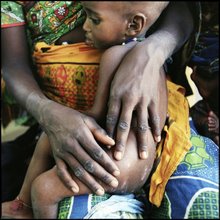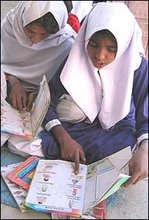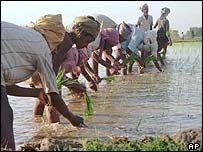PREAMBLE: Over the past 15 years, PacificSci principals have had the opportunity to be involved in aspects of public health development in countries grouped within the Eastern Mediterranean Regional Office of the World Health Organization (WHO/EMRO), specifically Kuwait, Pakistan and the United Arab Emirates (UAE). This has been by virtue of both full time geographically-based work (1998-2003), as well as short term consultancies and collegial links.
These countries and their neighbours in the region face many common and similar challenges in terms of social and economic development, status of women, environmental control and regulation, a highly mobile migrant workforce and other demands of competing in a globalized economy.
Over the past decade especially, the region as a whole has also been dealing with social and political unrest, much of this of an extreme nature, largely resulting from a lack of good governance combined with negative geopolitical dynamics that have given scant regard to the wellbeing of the general populace.
Good public governance, referring to how public institutions function responsively, transparently, and with accountability, is a key mechanism through which the values of development are secured for people. These values include equality of treatment, freedom to choose, opportunities to participate in the process, and not least of all - justice. Such governance recognizes the integrity, rights, and needs of everyone within the state, and is essential to reducing poverty and stimulating growth.[1]
Good governance also embodies the value of “healthy public policy”, characterized by explicit concern for health and equity in all areas of policy and by accountability for health impact. The main aim of health public policy is to create a supportive environment to enable people to lead healthy lives. Such a policy makes health choices possible or easier for citizens. It makes social and physical environments health-enhancing. In the pursuit of healthy public policy, government sectors concerned with agriculture, trade, education, industry, and communications need to take into account health as an essential factor when formulating policy. Healthy public policy benefits populations, communities and individuals.[2]
This brief Reconnaissance consists of two sections: first, the published perspectives of the World Bank and WHO/EMRO, and secondly, our own observations of the emergence of two important networks: public health associations, and membership of national public health institutes in a new global organization.
Note: Minor edits were made to this posting on May 17 and 18, 2012.
PUBLIC HEALTH IN THE MIDDLE EAST
– Regional Perspectives
A DECADE AGO, the World Bank supported a regional conference in Beirut which led to a major report entitled Public Health in the Middle East and North Africa – meeting the challenges of the twenty-first century.[3]
Based on discussion elaborated in chapters of this report, six priorities emerged: 1. Leadership and Political Will 2. A New View of Public Health 3. Data and Surveillance 4. Partnerships and Collaboration 5. Emerging Health Problems 6. Public Health “Best Buys”
The report stated that “the status of public health practitioners is a significant problem. One of the main challenges facing public health in the... region is the recruitment and retention of appropriate skills and expertise, in terms of both quality and quantity.”
The persistence of an outmoded view of public health therefore is part of the challenge in this region, and could be the greatest obstacle to change: a view of public health as an adjunct to the health care system, rather than as a strategic force for a healthy population.
The challenge therefore is to envision what public health throughout the region could become within a reasonable period, say 15-20 years, then determine how to take it there. Insightful leadership with political support can lead this change.
It is on this particular issue regarding outmoded concepts of public health that the following selected extracts from the 2002 World Bank summary of priority issue #2 (above) justify consideration (bullets added and sequence adjusted for emphasis) and are highly applicable to the region:
A New View of Public Health:
• Countries should undertake assessments of their public health functions and capacity in the near future…. steps should be taken to build capacity and broaden the scope of public health beyond the activities of physicians….
• Public health infrastructure should not be an adjunct to curative health systems. Rather it should be part and parcel of a comprehensive health system that blurs the boundaries between curative and public health services.
• There must be greater multisectoral commitment to healthy public policies; this can be accomplished by developing objectives and targets for healthy populations and lifestyles, including the necessary laws and regulations.
• Developing community based health promotion programs can be an effective way to increase the health literacy of communities.
Now moving to a more recent review by World Bank regional specialists [4], disease-surveillance systems as reviewed by the WHO Regional Office WHO/EMRO) were considered mostly inadequate, with insufficient commitment, lack of practical guidelines, overwhelming reporting requirements, lack of transparency, shortage of human resources, and poor analysis of data. It is stated that: “this deficit in the capability to assess and monitor population health will have to be addressed if effective plans for public health capacity building are to be put in place”.
Equally critical, the World Bank reviewers considered that, while many public-health services are well-established, management functions such as inter-sectoral policymaking, public information and education, and quality assurance, are underdeveloped.
Further, when compared with other world regions, the limited interaction between governments and civil society is considered likely to reduce the social dividend by not meeting rising expectations in the population.
The review argued that higher health sector spending will not translate into effective results if investments are not well managed or directed towards cost-effective solutions, and concludes that new institutional capacities and governance structures are needed.
New Public Health Networks
In some countries, there are organized public health professional and lay networks. These are generally found in larger countries, although with varying levels of vitality e.g., national public health associations exist in Egypt, Ethiopia, Iran, Lebanon, Pakistan, Sudan and Yemen. At the other extreme, the Gulf states so far generally lack this type of non-governmental support for public health; these entities typically have much smaller national populations (with the exception of Saudi Arabia with 27.4 million people, of whom some 19 million are nationals). Such associations have the opportunity to affiliate with a long-standing and reputable international body: the World Federation of Public Health Associations (WFPHA).[5]
Note: The six Arab states bordering the Arabian Gulf: Saudi Arabia, UAE, Qatar, Kuwait, Bahrain and Oman form the Gulf Cooperation Council (GCC). Although Iraq is an Arab state and shares a small border with the Gulf, it is generally not included within this grouping.
Interestingly, national public health institutes are also reaching out among themselves, by affiliating with a recently formed International Association of National Public Health Institutes (IANPHI).[6] Among EMRO countries, these include Afghanistan, Iran, Jordan, Morocco, Pakistan and Saudi Arabia. Turkey and Israel are also members of IANPHI, but not included within the WHO-EMRO group of countries (they are considered within WHO-EURO).
In other words, these governmental public health agencies are starting to link up within an international network. According to their website, IANPHI spearheads improvements in national public health systems through a peer-assistance evaluation, grant support and efforts focused on NPHI advocacy, collaboration, and sustainability. It provides direct funding to governments in low-resource countries to build and strengthen national public health capacity through development of NPHIs. It does this through grants to support NPHI to NPHI evaluations, longer term capacity building initiatives, and seed grants to assist particular research agendas.
All this may make it attractive for other Middle Eastern countries to consider both supporting the development of public health associations and also joining this global intergovernmental agency network, particularly those who need to build capacity... and (when it comes down to it) who doesn't?
Developing a national public health association, especially, is a way of strengthening the role of civil society in a domain that can only be in the best interests of the population.
Envoi –Springtime for Public Health in the Middle East?
Prerequisites for health and social development everywhere are peace and justice; nutritious food and clean water; education and decent housing; a useful role in society and an adequate income; conservation of resources and the protection of the ecosystem. These increasingly appear to be the aspirations of Middle Eastern peoples, and indeed throughout the greater Eastern Mediterranean Region.
The vision of healthy public policy is the achievement of these fundamental conditions for healthy living. The achievement of global health rests on recognizing and accepting interdependence both within and between countries. Commitment to global public health will depend on securing the means of international cooperation, especially to act on issues that cross national boundaries.[6]
While the road ahead will have its challenges, and will require new forms of leadership, the international networking that is starting to emerge in the Middle East may well be a forerunner of an “Arab Spring for public health”. If so, this can only be to the ultimate benefit of all who live in the region.
References
1. World Bank. Better Governance for Development in the Middle East and North Africa: Enhancing Inclusiveness and Accountability. 2011. http://web.worldbank.org/WBSITE/EXTERNAL/COUNTRIES/MENAEXT/EXTMNAREGTOPGOVERNANCE/0,,contentMDK:20261216~pagePK:34004173~piPK:34003707~theSitePK:497024,00.html Accessed May 14, 2012.
2. Report on the Adelaide Conference. Healthy Public Policy. 2nd International Conference on Health Promotion April 5-9, 1988 Adelaide South Australia. http://www.who.int/healthpromotion/conferences/previous/adelide/en/index1.html Accessed May 14, 2012.
3. Pierre-Lousie AM, Akala FA, Karam HS. Public health in the Middle East and North Africa: meeting the challenges of the twenty-first century. World Bank Institute. WBI Learning Resources Series. The World Bank 2004.
4. Akala FA, El-Saharty S. [The aWorld Bank, Middle East and North Africa Region, Human Development Sector, Washington, DC] Public-health challenges in the Middle East and North Africa. The Lancet (2006) 367: 961-4.
5. World Federation of Public Health Associations. http://www.wfpha.org/ Accessed May 16, 2012.
6. Public Health Institutes of the World (IANPHI). http://www.ianphi.org/ Accessed May 13, 2012.
FROM a Great Canadian and World Statesman
"A great gulf... has... opened between man's material advance and his social and moral progress, a gulf in which he may one day be lost if it is not closed or narrowed..."
Lester B Pearson
http://nobelprize.org/nobel_prizes/peace/laureates/1957/pearson-lecture.html
Wednesday 16 May 2012
Subscribe to:
Posts (Atom)
INSPIRATIONAL WELCOME ............................... from T.S.Eliot's "Little Gidding"
If you came this way From the place you would come from... It would be the same at the end of the journey...
If you came, not knowing what you came for, It would be the same... And what you thought you came for Is only a shell, a husk of meaning... From which the purpose breaks only when it is fulfilled If at all.




















